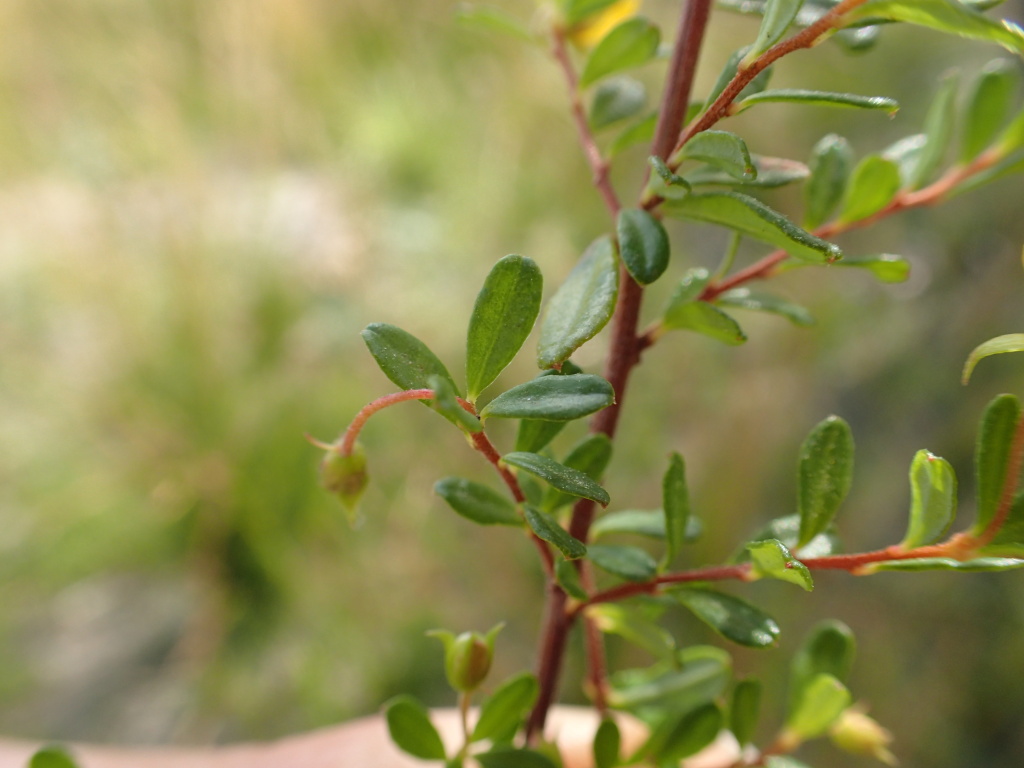Hibbertia empetrifolia
(DC.) HooglandSpreading to prostrate shrubs; branches pubescent to puberulous, to c. 40 cm long. Vestiture of tubercle-based, mainly simple hairs (sometimes hooked) over scattered stellate hairs. Leaves narrowly elliptic to oblong-oblanceolate, 4–14 mm long, 0.7–6.1 mm wide, sparsely pubescent; petiole 0.2–0.9 mm long; apex obtuse to rounded, rarely mucronate with central vein scarcely protruding; margins narrow, revolute, distant from scarcely raised central vein. Flowers on peduncle 2–6(–10.4) mm long, terminal, but often apparently axillary when on reduced short shoots or on main branches with continued axillary growth, subtended by 1 subulate bract 1.2–2.5 mm long, half as long to subequal to sepals; sepals 2.5–4.6 mm long, unequal, pubescent; petals oblanceolate- to obovate-cuneate, 3.1–6 mm long, mid yellow; stamens (4–)5–7(–9); filaments connate basally; carpels 2, tomentose to villous with stellate or forked hairs. Flowers Aug.–Feb.
LoM, GleP, Brid, VVP, GipP, OtP, WaP, Gold, CVU, EGL, EGU, WPro, HSF, HNF, OtR, Strz, MonT, HFE. Locally common in well-watered forest, woodland or heathland east from Port Phillip Bay.
Three subspecies were previously recognised. However, subspecies uncinata Toelken is no longer recognised as a distinct taxon. While Subspecies radians from South Australia is now treated as a distinct species (as H. radians (Toelken) T.Hammer). This taxon is definded by the many-branched stellate hairs (more than 8 branches) with a broad tubercle-base on the upper leaf surface and smaller flowers (Hammer 2023).
Hibbertia empetrifolia resembles H. appressa (see note under that species). Furthermore, leaves of H. empetrifolia can resemble juvenile forms of H. aspera and allied species (i.e. H. hirticalyx, H. notabilis, H. pallidiflora and H. truncata). Like H. empetrifolia, the lower surface of juvenile leaves of H. aspera and allies have stellate hairs that are largely confined to the central vein, while simple hairs are present on the lamina. However, the juvenile leaves of H. aspera and allies have a much greater density of simple hairs on the lamina, and these are soon replaced by a dense layer of stellate hairs.
Toelken, H.R. (1996). Dilleniaceae. In: Walsh, N.G.; Entwisle, T.J., Flora of Victoria Vol. 3, Dicotyledons Winteraceae to Myrtaceae, pp. 300–313. Inkata Press, Melbourne.
 Spinning
Spinning

